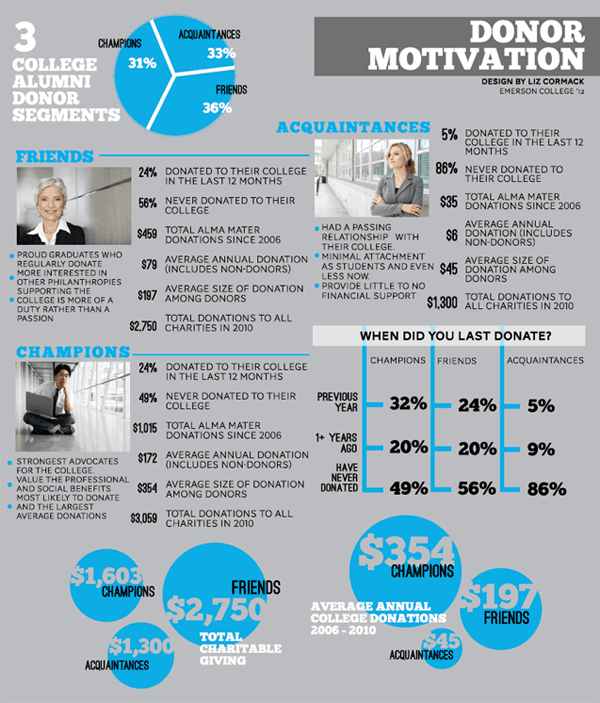A struggling economy, slashed budgets, and cutthroat competition for every donated dollar—this is the reality that colleges and universities nationwide face. Trying to appeal to a new generation of prospective donors that is younger, increasingly female, and engaged online poses novel challenges for institutional fundraisers, who have to adapt to a new audience that has different interests and ways of communicating. Fundraisers need to craft and deliver appeals via modern channels such as social media and mobile phones. Furthermore, fundraising has never been more important to the viability of our colleges and universities. Moody’s Investors Services has expressed concern about the financial prospects of higher education for the foreseeable future. It warns that small, tuition-dependent private colleges and regional public universities are most at-risk, and concludes that philanthropic support is key to institutional stability.
But how can higher education institutions raise desperately needed funds in this economic environment, especially when they’re competing with 1.6 million (and growing) US nonprofits vying for the same funds?
Education affects health, employment rates, civic participation, and self-esteem, but it takes money. Everyone supports more money for education, right? But, the truth is that most of us do not donate to our alma maters. Are we hypocrites? Distracted? Recovering from the recession? Converge Consulting conducted a national study of 2050 alumni to explore attitudes, motivations, and behavior associated with giving. The respondents were highly representative of the study population and statistically aligned with US census data in terms of gender (56 percent female), degree attainment (70 percent held an undergraduate degree), institutional type attended (65 percent public), marital status (59 percent married), employment status (50 percent full-time), ethnicity (87 percent white/Caucasian), mean household income ($74,285), and religious orientation (67 percent Christian). The guiding questions were:
• What motivates people to give?
• What differentiates those who give from those who do not?
• Where and how should higher education fundraising professionals expend limited resources to maximize efforts?
The study utilized six measures to segment alumni, examining how they felt about:
Are you enjoying this article? Read more like this, plus SSIR's full archive of content, when you subscribe.
• The nature of their relationships with their institutions
• Their professional opportunities upon graduation
• Professional benefits resulting from institutional affiliation
• The importance of financially supporting their institutions
• Donating to charities
• Their lives since graduating (satisfaction)
These measures determined three donor types:
• Champions
• Friends
• Acquaintances
The following graphic depicts significant differences among the three groups in terms of attitudes, motivations, and behaviors associated with giving:

In terms of total donations to institutions within the last twelve months, the percentage of people across segments who have ever donated, and average donation size, this graphic indicates that institutions are simply not getting much support from alumni.
Fortunately, services derived from the findings enable fundraisers to administer a seven-question survey that will classify alumni into the three donor types, determine their preferred communication channels, and identify the organizations that they support. Thus, fundraising professionals can identify Acquaintances, who will likely never give, and reallocate those resources to Champions and Friends. Moreover, they can identify Champions and Friends who don’t give (or who give to other organizations), and reach out to them via their preferred channels, and with messages that are more likely to resonate and evoke response. Effective implementation of such practices could increase overall philanthropic support of our colleges and universities—institutions that need all of the help they can get.
Support SSIR’s coverage of cross-sector solutions to global challenges.
Help us further the reach of innovative ideas. Donate today.
Read more stories by James Vineburgh.

